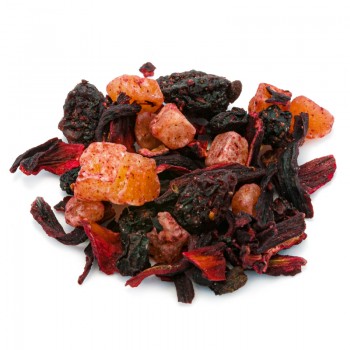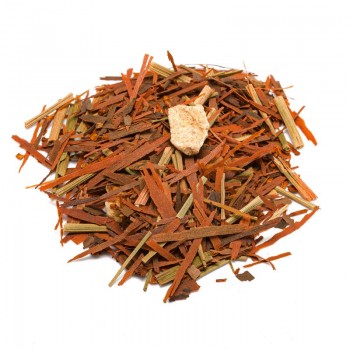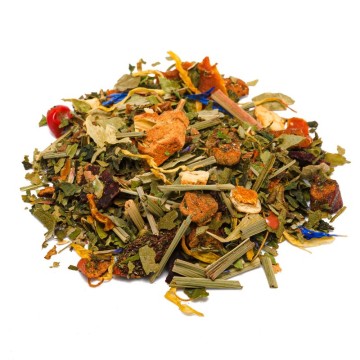Try this combination of ingredients, which makes the infusion even more intense for the well-being of the digestive system and for relaxation. Verbena leaves are a food that has historically been used as a natural sedative. The properties of verbena leaves combine with those of other herbs or fruits, to provide benefits to well-being.
Digestive infusion: properties and benefits
A cup of hot infusion of verbena leaves can relieve stress and induce sleep. The benefits of verbena also include a detoxifying and purifying action, which improves gastrointestinal functions. The benefits of verbena tea concern the digestive system but are also useful as an antispasmodic, to calm menstrual pain. Especially in combination with other ingredients such as those in the infusion we propose. Verbena leaves in infusion simplify psycho-physical relaxation, acting as muscle relaxants (to relax the muscles).
They promote rest by acting on the nervous system in a beneficial and light way, through the action of cannabidiol (CBD), a natural non-psychoactive substance, and with the support of other bioactive compounds in the leaves. The effects of less anxiety can reduce agitation, shortness of breath and tiredness from stress. The infusion is useful for inducing a restful and prolonged sleep. Verbena also has light natural anti-inflammatory effects, beneficial for soothing muscle and joint pain in those suffering from arthritis. The cannabinoids present in the leaves, which can help in the treatment of chronic pain, swelling and irritation.
The digestive infusion has also been studied for its possible effects on blood pressure, reducing it in favor of less stress on the heart. The positive effects of this plant on the cardiovascular system are given by the vasodilation of the arteries, caused by the relaxation of the tissues. In addition, the digestive infusion provides vitamins and chlorophyll, as well as elements with antioxidant action, such as flavonoids and terpenoids. In addition to the benefits of verbena, therefore from conventional agriculture, this infusion contains ingredients useful for the well-being of the digestive system.
We find peppermint, apple, nutrients such as lemongrass, fennel, cocoa peels and nettle leaves. In addition to the licorice root, dog rose, calendula, cinnamon pieces and mallow flowers.
Plant and flowers
The components of the herbal tea are many, and the mix contains leaves and flowers of different origins. We propose an infusion with verbena leaves, peppermint, apple pieces, lemongrass, fennel, cocoa peels, licorice root, rose hips, nettle leaves, marigold, cinnamon pieces, mallow flowers.
The apple comes from the Malus domestica plant of the Rosaceae family. It is a tree native to Asia, now widespread throughout the planet. The famous fruits are diversified in colors and in many varieties.
Fennel (Foeniculum vulgare) is a plant of the Apiaceae family, which is consumed as a vegetable. All parts are scented, and it has yellow flowers. It is native to the Mediterranean coasts, but is widespread in many parts of the world, especially near the coasts of seas and rivers.
Rosa canina belongs to the Rosaceae family. Both the petals and the fruits of this plant are used. It grows as a shrub with thorny stems, serrated leaves and colorful flowers. The fruit is composed of dried fruits enclosed in a floral cup, with beneficial properties for health.
Mint or Mentha is a perennial plant of the Lamiaceae family. It is very widespread, showing different varieties, up to 24 species and all with similar herbal properties. Many hybrids of mint are renowned, mainly used for food.
Nettle (Urtica dioica) is a perennial plant of the Urticaceae family. Native to Europe, temperate Asia and North Africa, it is now widespread throughout the world. The leaves and stems are equipped with prickly hairs, while the leaves are used for their properties. Mallow is a plant of European origin, which we find in all Mediterranean areas. It grows spontaneously up to 1300 m above sea level. Already sacred in ancient times, it became over time an important food in calming and soothing potions - using leaves and flowers.
Peppermint (Mentha × piperita) is a hybrid between spearmint (Mentha spicata) and water mint (Mentha aquatica). It is part of the Lamiaceae family, it grows in full sun or partial shade, on various types of soil, in fact it is very widespread.
Citronella, also called lemongrass, is a plant belonging to the Poaceae family, to the Cymbopogon genus. It is native to the tropical areas of Asia, considered a grass plant that grows in bushes up to one meter high.
Cocoa shells come from the peels of the Theobroma cacao plant native to Central America. The natural place of cultivation of cocoa is equatorial, with a hot and very humid climate.
Licorice or Glycyrrhiza glabra is a plant of the Fabaceae family. A sweet and aromatic aroma is extracted from its root, known in pastry making and herbal medicine. It is a perennial plant native to Western Asia, North Africa and Southern Europe.
Calendula officinalis is a plant of the Asteraceae - Compositae family and comes from the Asterales order. It is grown in fairly fertile, well-drained soil and in full sun. It is a perennial plant, whose green leaves are known for their intense aroma; the flowers are yellow-orange and appear all year round. Cinnamon (Cinnamomum verum), is an evergreen tree of the Lauraceae family. The spice comes from its dried inner bark. The tree grows well in moist and well-drained soil, reaching about 15 meters in height. There are various species cultivated as a source of cinnamon.
Nutritional values of the digestive infusion
This infusion contains various nutrients, being made up of various ingredients. Mainly, verbena leaves make available few fats, carbohydrates, proteins and fibers. Among the antioxidants there are polyphenols, in addition to omega-3 and omega-6 fatty acids and digestible globular proteins. The leaves are rich in iron, zinc, potassium, magnesium and phosphorus. The infusion provides compounds including cannabidiol (CBD), chlorophyll and terpenoids such as myrcene, limonene, pinene ß-caryophyllene, linalool.
How to use the herbal tea
This digestive infusion is obtained by placing in a cup (250 ml), about 3-5 grams of the mixture of ingredients with water at 100 °C. Leave to infuse for 10 to 12 minutes, before drinking the relaxing herbal tea. Add honey or sugar, if desired.
Digestive infusion: side effects and contraindications
Among the calming herbal teas, this combination does not have particular side effects, but it is necessary to respect the recommended quantities. Excessive consumption can cause adverse reactions, and it is also possible to be allergic to the components of the infusion. Therefore, it is advisable to read its composition carefully. The digestive infusion can induce in high doses unwanted effects such as extreme tiredness, apathy, anxiety. At the gastrointestinal level it can cause irritation of the throat, nausea, diarrhea and swelling. It is advisable to take the infusion in the evening, as it can cause rapid drowsiness. Also, keep in mind that the digestive infusion can have pharmacological interactions with anticoagulant drugs, some diuretics, medicines that act on the nervous system and for heart failure. Consult your doctor if you suffer from a chronic health condition. This infusion is not recommended for pregnant or breastfeeding women.





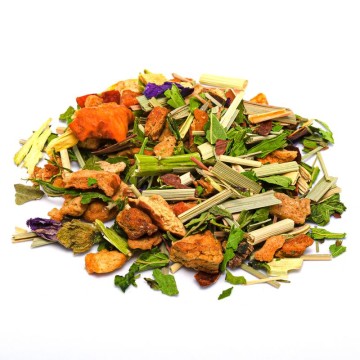



 No reward points for this product.
No reward points for this product.
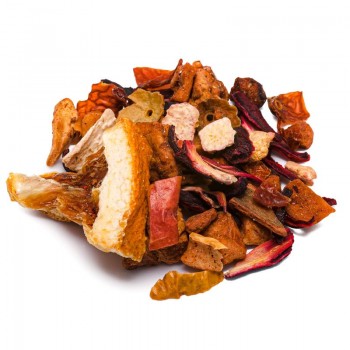
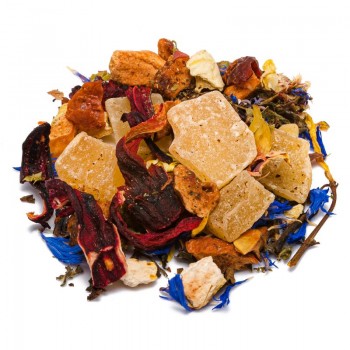
![infuso lime mirtilli rossi [Natura d'Oriente]](https://www.naturadoriente.com/3551-home_default/lime-infused-cranberries.jpg)

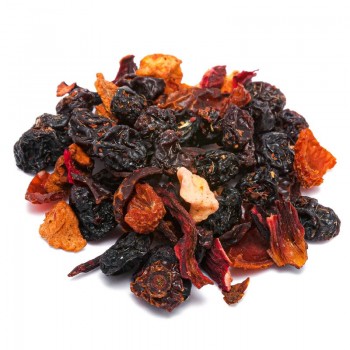

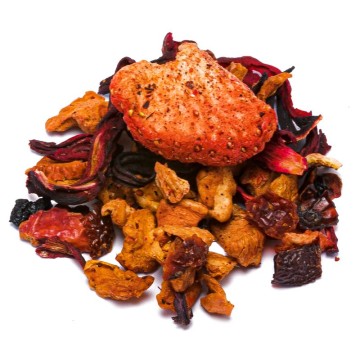
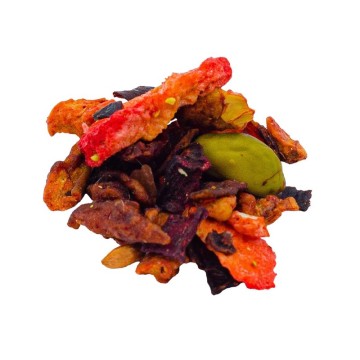
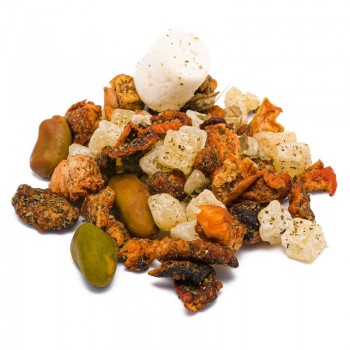
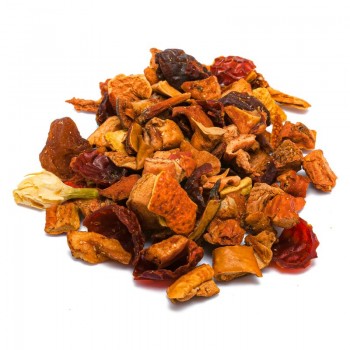
![infuso pesca e vaniglia [Natura d'Oriente]](https://www.naturadoriente.com/3538-home_default/infused-peach-vanilla.jpg)
